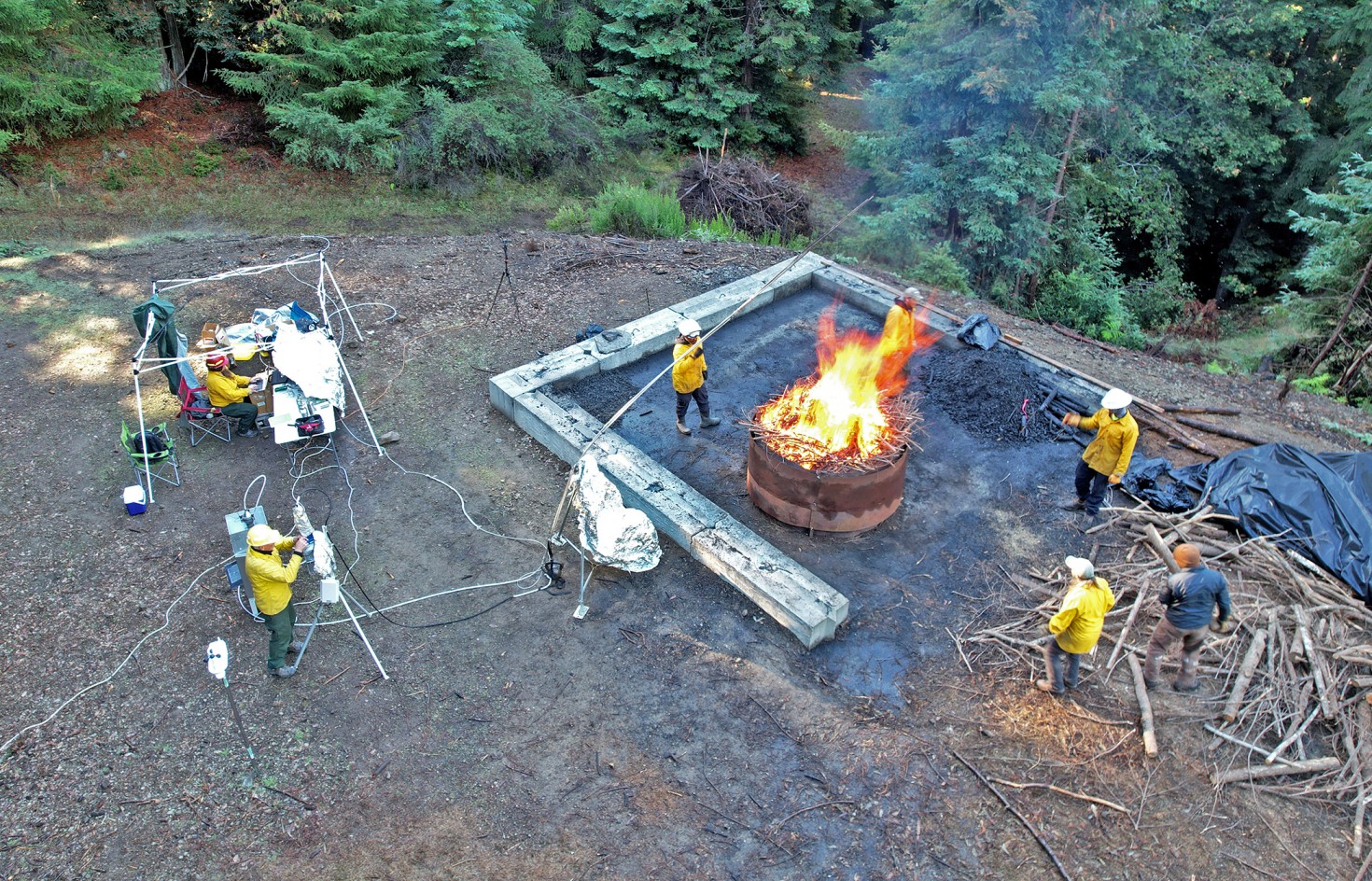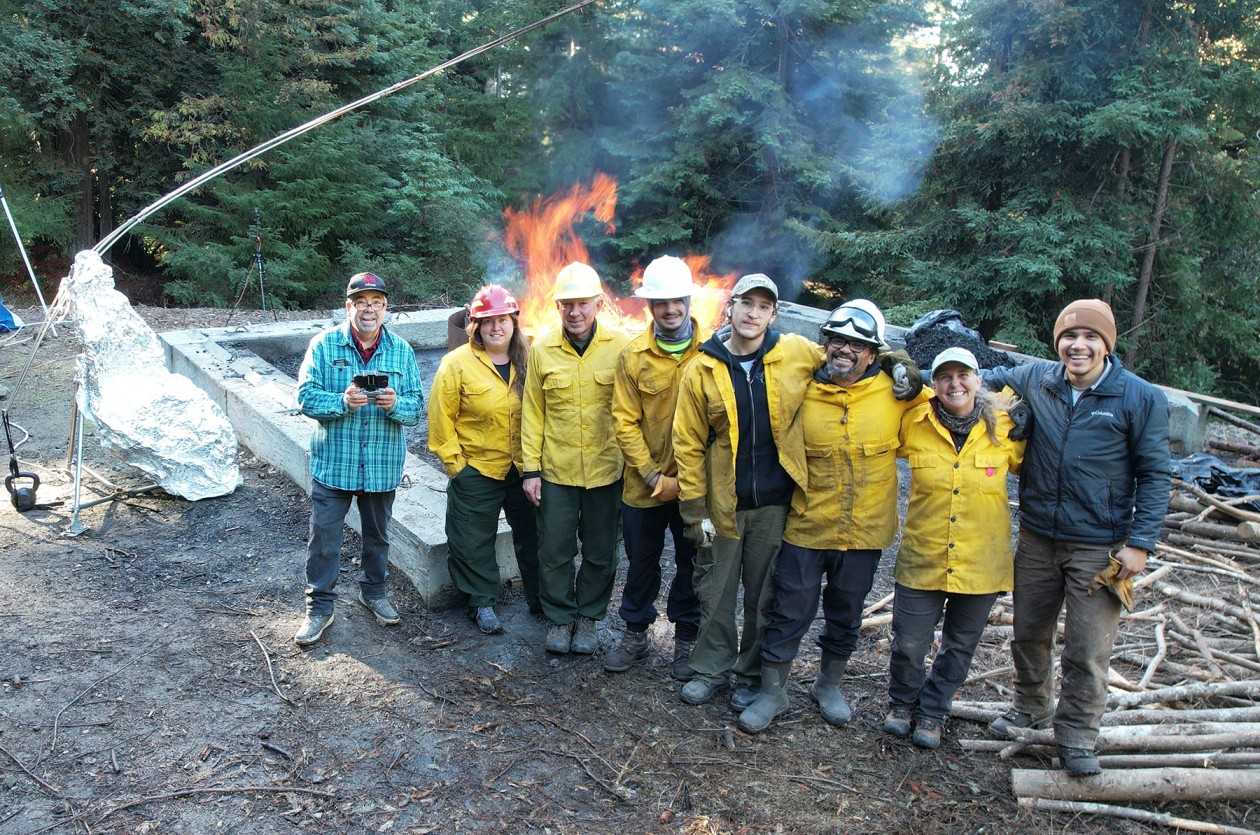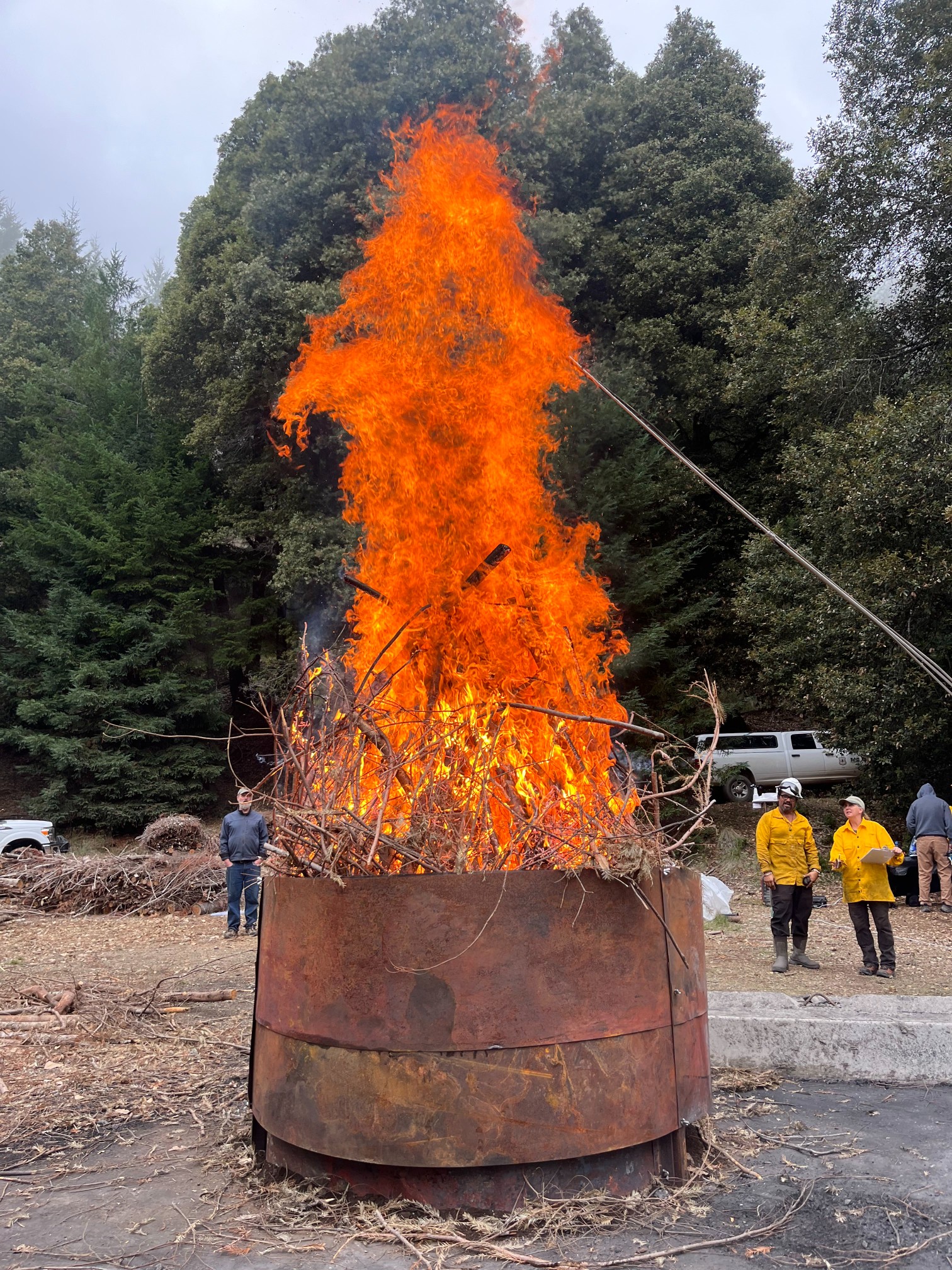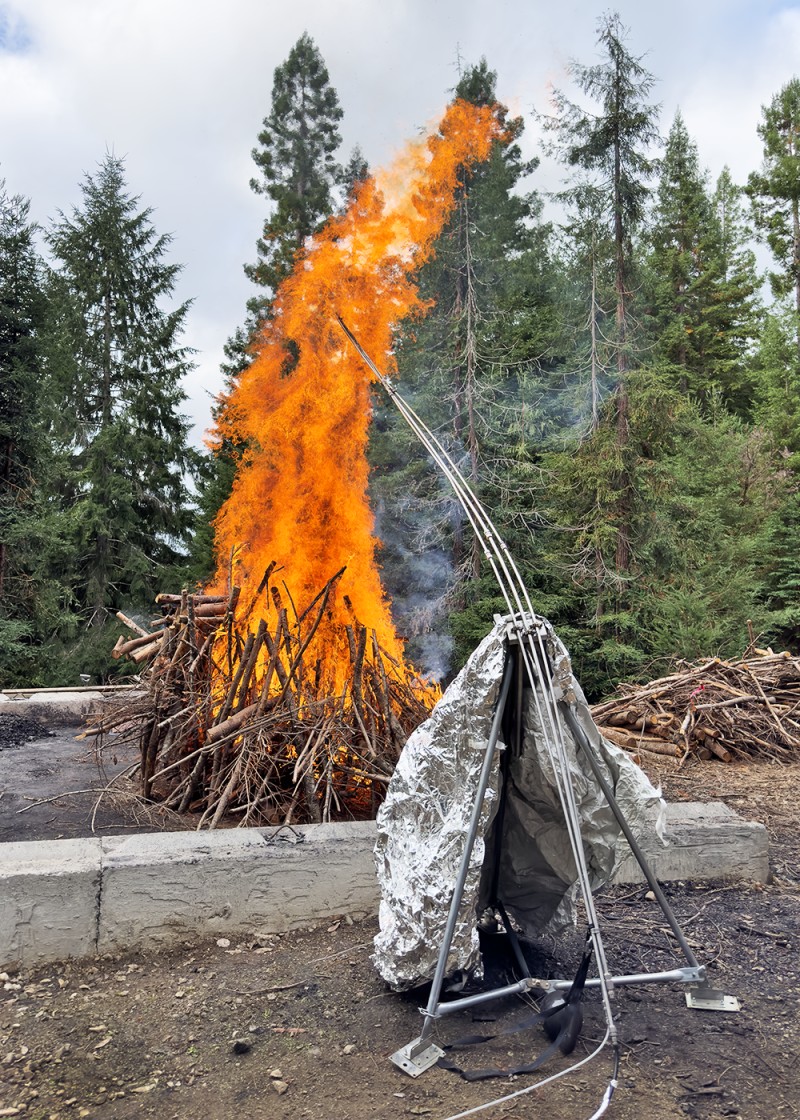To further evaluate the environmental impact of creating biochar, Sonoma Ecology Center recently took part in a team that conducted emissions tests on three different methods of burning surplus forestry (waste) material: the conservation burn technique, a flame-cap kiln, and standard open burn piles. This testing would allow us to directly quantify positive benefits in carbon sequestration and the level of pollutant emissions in producing biochar from different burn techniques. From the testing, we will be able to determine whether producing biochar from surplus forestry bioresources and changing how open piles burns are conducted should be considered best practices and recommended by air districts.
Sonoma Ecology Center worked with partners: the Usal Redwood Forest Company, the U.S. Forest Service Fire Science Lab, and Washington State University, along with staff from Ground Culture, to conduct the testing using sophisticated measurement equipment. This project was funded by a grant from CAL FIRE that was awarded to the San Luis Obispo Air Pollution Control District.

Scientists from the U.S. Forest Service Fire Science Lab measuring emissions from a flame-cap kiln at the project site in Usal Forest, located in northern Mendocino County.
Biochar is a valuable form of stable, recalcitrant carbon that has been shown to be beneficial as an agricultural soil, compost amendment, and a growing number of industrial uses as a replacement for fossil-based ingredients. Biochar is produced by heating organic matter using high heat (typically 350 C to 1000 C) in low-oxygen environments. Commonly used as a soil amendment (typically combined with compost), biochar increases soil health, conserves and stores nutrients and water, and, in many cases, increases agricultural crop yields. Biochar is also an important way to capture and store carbon.
While biochar is known to be effective for a variety of environmental uses, it is also important to understand how much emissions are being created when producing biochar using various methods. The standard open burn pile, where biomass is simply stacked on top of each other in open air and burned, generates large amounts of CO2, CO, methane, and particulate matter into the air. To reduce the amount of air pollution from biochar burning, one method SEC employs to create biochar is to use the flame cap kiln. The flame cap kiln is designed to exclude air from the bottom and sides of the device, focusing unburned gasses back into the flame front at the top and “cooking,” not burning to ash, the charred material that is building up within the kiln. Another method SEC employs to create biochar is a conservation burn pile. With this method, flame is ignited from the top rather than from the bottom and is extinguished with water well before the coals turn to ash.
The results from the testing in Usal Forest will help us determine how much altering standard burn pile techniques could reduce pollution if adopted and scaled statewide. We anticipate that two of the methods studied in the testing, the conservation burn pile and the flame-cap kiln, will significantly reduce PM 2.5 small particulate pollution (smoke) compared to the open burn piles, while also producing biochar.

Project crew including staff from SEC, URFC, USFS Fire Science Lab, and Ground Culture.
Sonoma Ecology Center had previously demonstrated the conservation burn and flame-cap kiln techniques during training sessions held at Sonoma Valley vineyards, George Ranch, and Sonoma Garden Park, as well as throughout California. If adopted as best practices throughout Sonoma Valley, these techniques — compared to the standard open burn pile—could reduce the smoke produced during burn season and generate a locally produced, regenerative soil enhancer that could be used by savvy gardeners to improve soil health.


The flame cap kiln (left) and a conservation burn pile (right) burning at the emissions testing site. The study aims to measure greenhouse gas emissions (GHGs) and Particulate Matter (PM) 2.5 emissions from various burning techniques.
A second round of testing will be done at the Forest Service Fire Science Lab in Missoula, Montana in the Spring, and official results from both the field and lab tests will be available in 2024.
